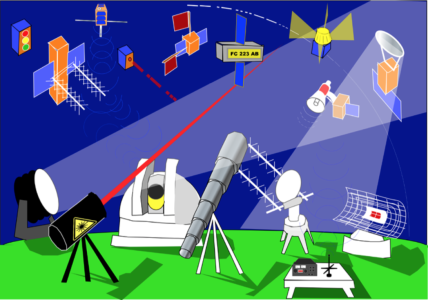Spacecraft tracking implications on operations and design of small satellites

Recent trends in miniaturisation of space hardware combined with the provision of affordable and standardised spacecraft components and structures is opening up space to new players and is rapidly increasing the traffic into orbit. While launcher technology is essentially still using the same concepts as during the start of the space age, very different actors are now placing small and very small satellites (micro-, nano-, pico-, including standardised CubeSats) into orbit, often piggybacking on medium/large class launch vehicles and aggregated in order to be released in large numbers from a single launch. Recent examples demostrated the release of hundred of satellites with a single launcher.
These small or very small satellites follow non-classical approaches both for their design and for their operations. They also bring with them new types of operators, some of which may have very limited resources for the development and the operation of their mission.
Depending on the operational altitude these small satellites, if effectively deployed as a large constellation, could become a source of severe concern for other established operators by potentially increasing the spatial object density above a critical level. This is currently under intensive study and no definite conclusions have been published yet.
Irrespective of the design approach and the maturity of the components, it is rather common for small satellites to follow a cost-efficient flight dynamics and operations scenario that is purely relying on publicly available two-line element (TLE) sets provided by the USSTRATCOM. No alternative data source of comparable completeness and availability exists today. This approach has, however, some major implications, as it fully relies on the ability of the US-SSN to rapidly track, discriminate, and identify the satellite. The sensitivity of the network is not published, but usually 10cm objects in low‐Earth orbit are assumed as a typical limit. However, the US-SSN TLEs do not guarantee a timely provision of needed input data to steer ground stations to establish contact with the mission. For most of the small satellites of the recent mass releases, the first TLE was available only after more than a week.
New technologies have to be found to improve the tracking of such as small object. This was the goal of this study.
